
Salty Sam’s Fun Blog for Children
Number 253
The South Sea lslands
Hello Everyone

Sandy Cove is the tourist beach next to Rocky Bay and it is a lovely place to be in the summer. Many holidaymakers go there to swim and sunbathe.
But sometimes people like to go to far away places for their holidays – even as far away as the other side of the world.
Of course to you, l might be the other side of the world, because l know there are readers of this blog who live in the South Sea lslands.
There are many islands in the Pacific as l was telling you last week – about 20,000 of them. They are divided into three zones: Polynesia, Micronesia and Melanesia.
You can’t think about the Pacific Ocean without thinking about these islands too – and they are very interesting.
These remote islands have a life of their own, as islands everywhere often do.
Sometimes the animals, birds and insects are unusual or even unique.
The animals living on these islands have evolved in their own way because they are living in a land cut off from the rest of the world – and there are lots of examples.
ln New Guinea, which is the largest tropical island, there is an animal called the tree kangaroo, or dingiso. lt is a kangaroo that climbs in the trees and eats leaves. lt lives high in the mountains so has a woolly coat to keep it warm.
ln New Caledonia, there is a bird with grey feathers and bright red beak, eyes and legs. lt is called the kagu. lt has wings but cannot fly. lnstead it runs along the ground with a bouncing, quite comical walk.
lt cannot fly because over many years its wings have become too weak. A lot of birds in this region of the world don’t fly because they didn’t really need to for a very long time. They had no predators (that means animals that wanted to eat them) and they also had plenty of food on the ground so that they didn’t need to travel far to find it.
The biggest island is, of course, New Zealand, at about 1,000 miles long. Many of the birds here too are flightless for the same reasons. There are parrots in the mountains which play in the snow. (Barney doesn’t like the cold much, he prefers the warmth – he comes from the Caribbean.)
And even stranger are the Fjordland crested penguins, or tawaki, which live in dense forests; here it is relatively safe to bring up their babies. They take daily trips to the ocean via the fresh streams that run through the forest because they like to eat fish. At three months old the babies will set off alone to start catching their own meals at sea.
The kakapo is flightless bird that l have told you about before. lt is a kind of parrot with a buzzing call and a very wise-looking face. lt is too heavy and short-winged to fly so it lives in burrows and climbs up trees where it eats its favourite meal of tiny seeds from the rimu tree. The kakapo, or owl parrot, will only have babies when there is a bumper crop of rimu seeds which is only about once in four years. This means of course it doesn’t have many babies – but it often lives to over 100 years old.
The South Sea lslands were the last lands on Earth to be discovered by man. And Hawaii is the remotest of them all. Before humans arrived there, a new species of plant or animal managed to arrive from across the vast oceans only once every 35,000 years. Now up to 50 arrive every year from different countries all over the globe as they are brought in by humans.
But there can be trouble when humans introduce species to places where they don’t belong. South Sea lsland species evolved to be defenceless, so when predators sometimes did arrive, and they were often brought by humans (for example cats which were pets or rats that were living on ships) many bird species disappeared from main island forests and some small islands completely.
Rabbits were taken to Australia where they caused huge devastation to crops. Australian possums were taken to New Zealand where they bred rapidly and over 70 million of them started to strip the forests of foliage and damage the balance of nature.
The remotest single island in the Pacific is Easter lsland. lt was formed by volcanic eruptions and named Easter lsland by the Dutch explorer who discovered it at that time of year in 1722. lt is only 13 by 7 miles and there are thousands of miles of ocean in every direction beyond its shores.
People only arrived there less than 1,000 years ago. lt is a wild and desolate place. lt is famous for its nearly nine hundred huge statues made from locally quarried stone. They are called moai and are thought to be really important to the hundreds of tribal people that once lived here.
There are rich volcanic soils on the island and once there were palm forests, with many species of birds. There were huge colonies of seabirds on the cliffs overlooking the sea. Now, there is a small community welcoming tourists who want to visit this windswept and barren place.
But there are many lush beautiful islands for tourists to visit too, like Fiji, the Cook lslands and Samoa, with stunning beaches and crystal clear waters.
You may visit this paradise yourself one day.
Talking about holidays, l am taking Bill and Bob to visit my cousin Smiley Sid this weekend so l will have lots to tell you about our trip in next week’s blog post l expect.
l will see you then…
Bye bye everyone – don’t forget to subscribe to my blog!
lf you like my blog, please support it by telling all your friends and followers about it.
Thank you!
And see you again next Fun Friday!
Love and kisses
Salty Sam

www.christina-sinclair.com


Bill and Bob’s Joke of the Week![]()
![]()
Bill: Do you know Uncle Ned? He comes from New Zealand?
Bob: Oh? Which part?
Bill: All of him of course!

Salty Sam © Christina Sinclair 2015
Unauthorized use and/or duplication of material from this blog without express and written permission from this blog’s author and owner is strictly prohibited.
Links may be used to www.christina-sinclair.com

Picture Gallery
 The South Sea Islands
The South Sea Islands
 Fiji-hotels.com
Fiji-hotels.com
 Dingiso
Dingiso
 Kagu
Kagu
(Ibc.lynxeds.com)
 Tawakis
Tawakis
(photvolcanica.com)
 Kakapo
Kakapo
(stuff.nz.co)
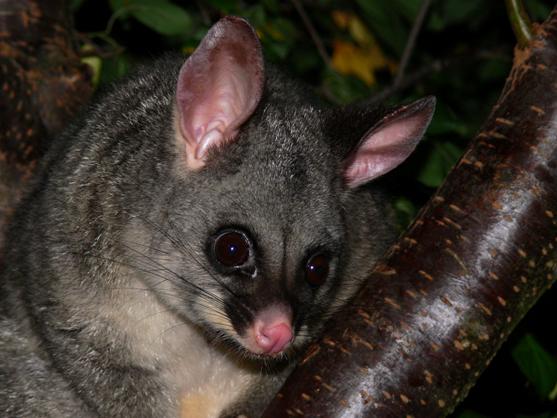 Australian possum
Australian possum


 THE SALTY SAM NEWS DESK
THE SALTY SAM NEWS DESK


What presents are you hoping to get this year?
Board games have become very popular in recent years – maybe because they bring people away from screens and together with friends.
We like them in our family and the children learn about numbers by throwing dice and counting spaces along boards.
The children decided last weekend that they wanted to design their own game to play in Henry’s new attic space playroom.
But they didn’t have any bright ideas.

So instead they decided to make a giant snakes and ladders game instead.
They used the side of a carton they got from the Rocky Bay Supermarket – they asked the manager if they could have one – and it had room to draw five hundred squares on it!
They cut some snakes from coloured paper and drew the ladders onto the board.

Henry made a really massive snake but the other children complained that it was far too long and nobody wanted to land on that so they stuck it to the other side of the board instead.
They decorated the board with lots of little stickers to make it look more interesting.
The board was so big in order to store it away they tuck it up against the wall behind Henry’s bookcase.


And as a special Christmas treat, here is an extra knitting pattern for you to make some lovely little decorations to hang on your tree or in your room.
If you get a knitting quickly, they could soon be hanging on your Christmas tree ready for next week!
We will be celebrating Christmas in Auntie Alice’s cottage as usual.
This week I took Bill and Bob on a special trip to London. It was very exciting. We saw some sights and did some shopping.
More about our trip next week.
NEWSDESK MINIMAKE
CHRISTMAS GNOMES
BODY (KNIT ONE)
Using 4mm knitting needles and white dk yarn cast on 13 stitches
Knit 4 rows of garter stitch
Change to green or red yarn
Knit 1 row
Slip 1 stitch (knit 1, purl 1) repeat the last 4 stitches until you reach the end of the row
Repeat the last row 11 times
Knit 2 rows of garter stitch
Change to white dk yarn
Knit 6 rows of stocking stitch
Don’t cast off – leave a length of yarn for sewing up
ARMS (KNIT TWO)
Using 4mm knitting needles and a colour to match the body cast on 6 stitches
Knit 2 rows of stocking stitch
Change to white dk yarn
Knit 2 rows of stocking stitch
Don’t cast off – leave a length of yarn for sewing up
HAT (KNIT ONE)
Using 4mm knitting needles and a colour to contrast with the body cast on 12 stitches
Change to white
Knit 2 rows of garter stitch
Change back to your colour
Knit 1 row
Continue knitting in stocking stitch starting with a purl row
Decrease 1 stitch at the beginning of each row until 1 stitch remains
Cast off
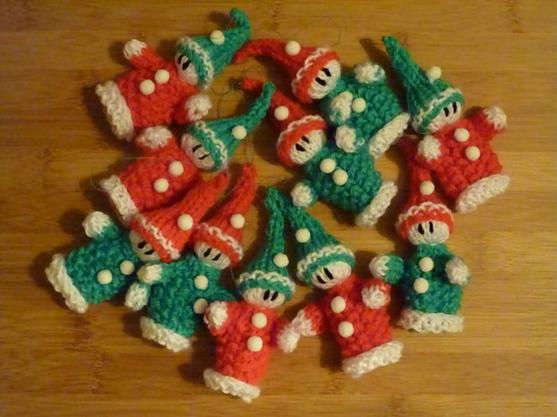
TO MAKE UP
- Pull in the top of the head
- Sew up back seam of body using the appropriate colours and over-sew stitching with wrong sides together and leave a length of white yarn on the outside at the back of the neck
- Pull ends of hands together
- Sew the underarm seams right sides together using over-sew stitching and the appropriate colour yarn
- Turn the arms the right way out and stuff with the ends of yarn leaving one length of the coloured yarn on the outside to use to attach the arms to the body
- Place body seam at the centre back and sew on arms by laying them on the chest and sewing them on along the top edge of the arm and the side of the body
- Stuff the head
- Tie the white yarn left at the nape of the neck around the neck a couple of times – pull tight and secure
- Sew up the back seam of the hat with wrong sides together
- Attach a loop of sewing thread to the top of the hat
- Sew some black eyes onto the front of the head (making sure they shows under the hat) by going in through the head with your yarn needle from the nape of the neck
- sew tiny bobbles to the front of the jacket and hat using sewing thread
- sew the base of the back of the hat to the back of the neck
- turn the bottom of the body up to make the body stiffer
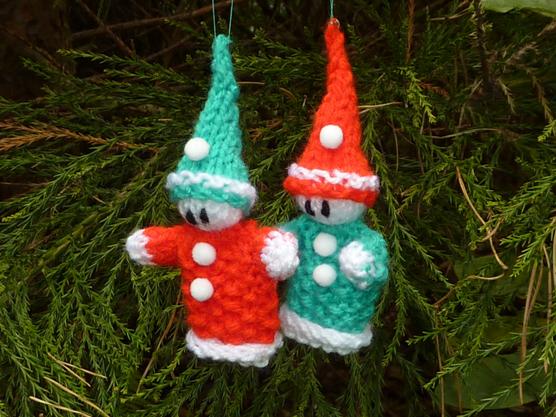
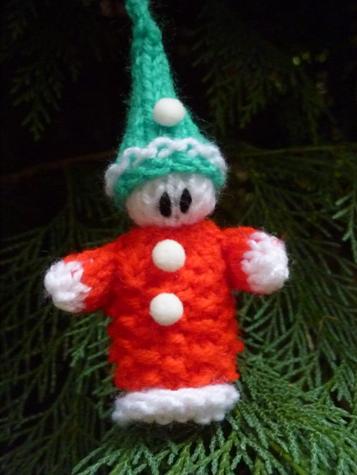

*********************
TO ADVERTISE ON THIS BLOG
PLEASE CONTACT:
christina.sinclair.ads@aol.co.uk
*********************


Quick Quiz
What do the following expressions mean?
- Ground rules
- Gaining ground
- On dangerous ground
- A bit thin on the ground
- Working yourself into the ground
- A good grounding
- Suits me down to the ground




lt’s the Weekend!

HOW TO MAKE A MlCROWAVABLE HEATlNG PAD COVER
It isn’t as warm as a South Sea Island here during the winter and so if you like snuggling up with a heating pad on a chilly, winter’s night this is a lovely cover to put on it so that it is not too hot to hold.
This cover is for a pad measuring 20cm across and 30cm from top to bottom.
If your pad is bigger you must add more stitches in multiples of 4 in order to make the pattern work when you cast on and then add more rows of garter stitch at the top of the cover.
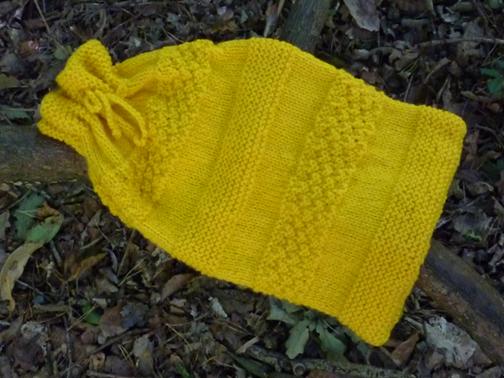
HEATING PAD COVER (KNIT TWO)
Using 4mm knitting needles and dk yarn cast on 46 stitches
Knit 16 rows of garter stitch
Knit 12 rows of stocking stitch
Purl 1 row
Sl1 (knit 2, purl 2) repeat last 4 stitches until last 5 stitches knit 2 purl 3
Sl1 (knit 2, purl 2) repeat last 4 stitches until last 5 stitches knit 2 purl 3
Sl1 (purl 2, knit 2) repeat last 4 stitches until last 5 stitches purl 2 knit 3
Sl1 (purl 2, knit 2) repeat last 4 stitches until last 5 stitches purl 2 knit 3
Sl1 (knit 2, purl 2) repeat last 4 stitches until last 5 stitches knit 2 purl 3
Sl1 (knit 2, purl 2) repeat last 4 stitches until last 5 stitches knit 2 purl 3
Sl1 (purl 2, knit 2) repeat last 4 stitches until last 5 stitches purl 2 knit 3
Sl1 (purl 2, knit 2) repeat last 4 stitches until last 5 stitches purl 2 knit 3
Sl1 (knit 2, purl 2) repeat last 4 stitches until last 5 stitches knit 2 purl 3
Sl1 (knit 2, purl 2) repeat last 4 stitches until last 5 stitches knit 2 purl 3
Sl1 (purl 2, knit 2) repeat last 4 stitches until last 5 stitches purl 2 knit 3
Sl1 (purl 2, knit 2) repeat last 4 stitches until last 5 stitches purl 2 knit 3
Knit 1 row
Knit 12 rows of stocking stitch
Knit 16 rows of garter stitch
Knit 12 rows of stocking stitch
Purl 1 row
Sl1 (knit 2, purl 2) repeat last 4 stitches until last 5 stitches knit 2 purl 3
Sl1 (knit 2, purl 2) repeat last 4 stitches until last 5 stitches knit 2 purl 3
Sl1 (purl 2, knit 2) repeat last 4 stitches until last 5 stitches purl 2 knit 3
Sl1 (purl 2, knit 2) repeat last 4 stitches until last 5 stitches purl 2 knit 3
Sl1 (knit 2, purl 2) repeat last 4 stitches until last 5 stitches knit 2 purl 3
Sl1 (knit 2, purl 2) repeat last 4 stitches until last 5 stitches knit 2 purl 3
Sl1 (purl 2, knit 2) repeat last 4 stitches until last 5 stitches purl 2 knit 3
Sl1 (purl 2, knit 2) repeat last 4 stitches until last 5 stitches purl 2 knit 3
Sl1 (knit 2, purl 2) repeat last 4 stitches until last 5 stitches knit 2 purl 3
Sl1 (knit 2, purl 2) repeat last 4 stitches until last 5 stitches knit 2 purl 3
Sl1 (purl 2, knit 2) repeat last 4 stitches until last 5 stitches purl 2 knit 3
Sl1 (purl 2, knit 2) repeat last 4 stitches until last 5 stitches purl 2 knit 3
Knit 1 row
Knit 12 rows of stocking stitch
Knit 16 rows of garter stitch
Cast off
TO MAKE UP
With right sides together and using over-sew stitching sew along the bottom and side seams
Crochet 100 chains into a length of yarn (use a contrasting colour if you prefer) to make a short cord or 200 chains to make a long one and thread this cord through the base of the garter stitch panel at the top

Please note that the material on this blog is for personal use and for use in classrooms only.
It is a copyright infringement and, therefore, illegal under international law to sell items made with these patterns.
Use of the toys and projects is at your own risk.
©Christina Sinclair Designs 2015


Quick Quiz Answers
- Ground rules – basic rules set when a project is begun
- Gaining ground – becoming successful
- On dangerous ground – very risky
- A bit thin on the ground – sparse
- Working yourself into the ground – working too hard and becoming overtired
- A good grounding – a good basic education to gain knowledge in an area or of a skill
- Suits me down to the ground – l like it a lot




You are a great writer!
Thanks Shawn!